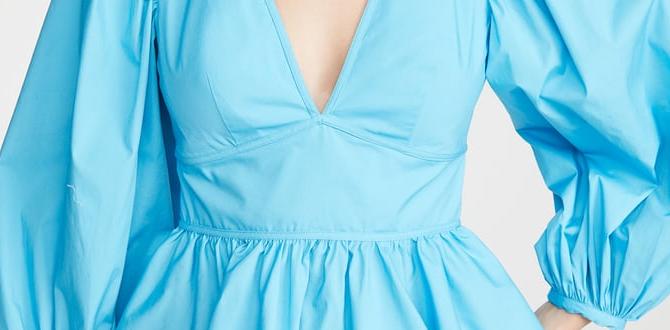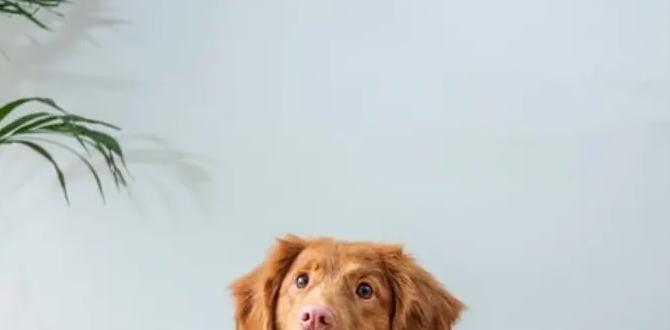Basset Hounds are unique dogs famous for their long ears, short legs, and distinct howl. When it comes to their coat colour, Basset Hounds can come in a variety of shades and patterns.
However, some rare coat colours are highly sought-after by breed enthusiasts. Basset hounds are a beloved breed of dog that have captured the hearts of many owners for their unique looks and charming personalities. While most people are familiar with the classic tri-color coat pattern of basset hounds, many rare and unique coat colours are not as common.
These rare basset hound colors are a fascinating aspect of the breed that offers a glimpse into the diversity and beauty of these dogs. We will explore the world of rare basset hound coat colors and learn about the genetics behind these unique patterns.
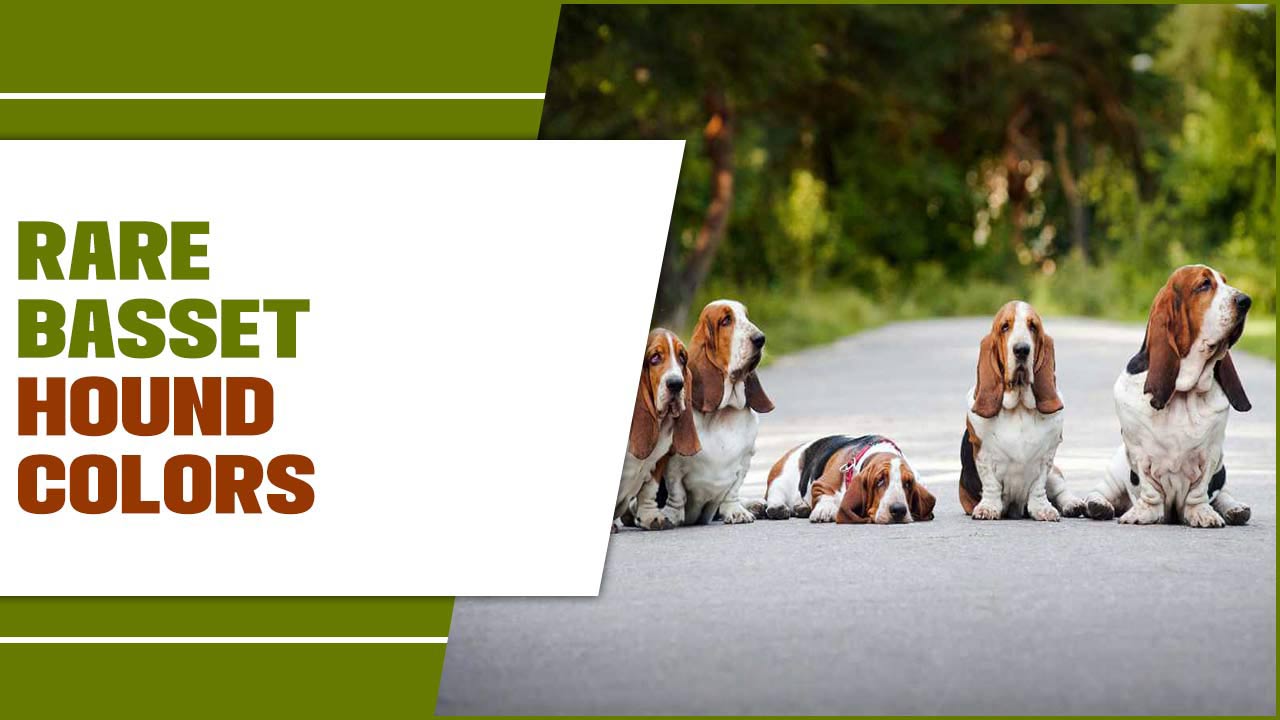
The History Of Basset Hounds And Their Coat Colours
The Basset Hound is a breed of dog that originated in France in the 16th century for hunting purposes. They were initially bred to track down small game, such as rabbits and hares, due to their exceptional smell and low-slung bodies that enabled them to follow the scent on the ground.
Over time, Basset Hounds became popular as pets over time due to their affectionate and loyal nature and unique physical features, such as their floppy ears and long bodies. In addition to their distinctive long ears and droopy eyes, Basset Hounds are famous for their various coat colours. The breed standard recognizes six colours:
- tri-colour (black, white, and tan),
- lemon and white,
- mahogany and white,
- red and white,
- black and white, and
- tan and white.
While tri-color is the most common colour combination, each variation has its unique charm and personality. The colour of a Basset Hound’s coat is determined by genetics and can be influenced by the colours of its parents and grandparents.
Understanding The Genetics Of Basset Hound Coat Colors
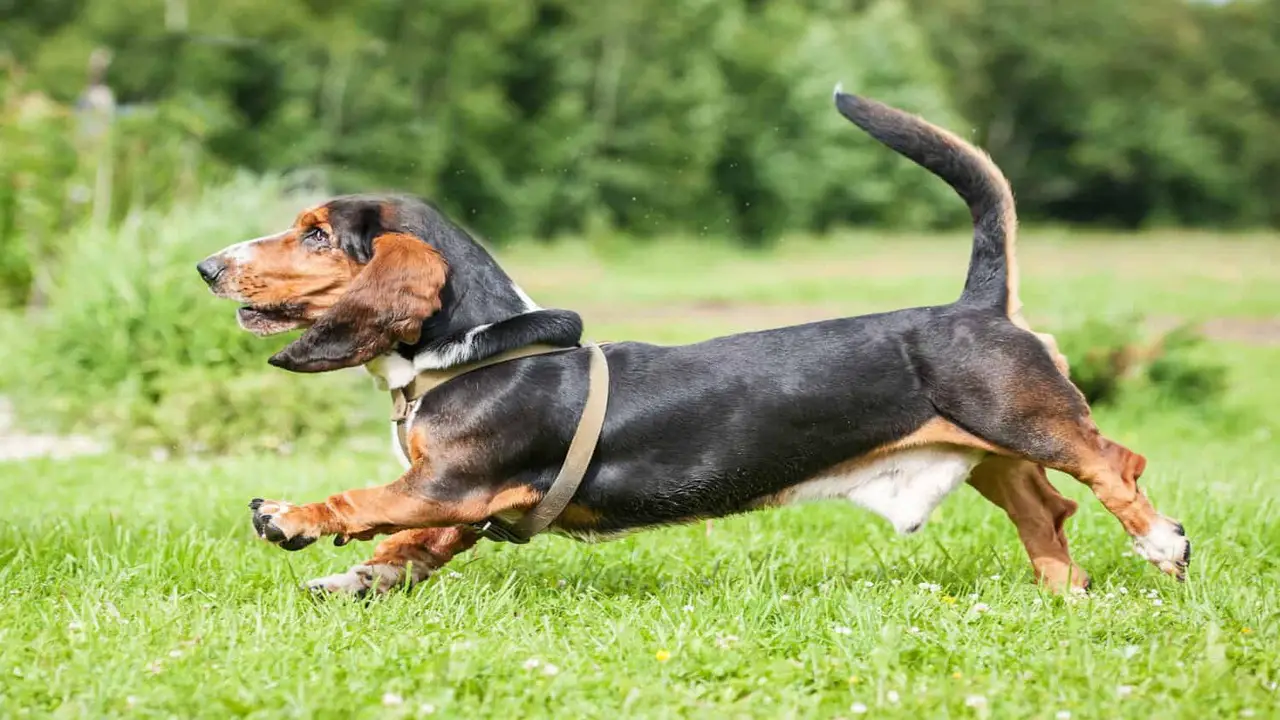
Basset Hounds are famous for their unique and adorable appearance, from floppy ears to short legs. In addition to their physical characteristics, Basset Hounds also exhibit a variety of coat colours that make each one truly one-of-a-kind. While some coat colours, such as tricolour and lemon and white, are more commonly seen in this breed, rare coat colours also appear in Basset Hounds.
Understanding the genetics behind these rare coat colours can provide insight into their inheritance patterns and help breeders select certain traits. One such rare coat colour in Basset Hounds is blue. This colour is caused by a dilution gene that affects the black pigment in the coat.
When a Basset Hound inherits two copies of this dilution gene, it can result in a blue coat colour. Another rare coat colour in Basset Hounds is chocolate, which is caused by a recessive gene that affects pigment production in the coat. A Basset Hound must inherit two copies of this recessive gene to exhibit a chocolate coat colour.
What Makes A Basset Hound’s Coat Colour Rare?
You might want to consider a Basset Hound if you’re looking for a four-legged friend with a unique coat colour. While these lovable dogs are most commonly famous for their signature floppy ears and sad eyes, their coat colours can also be unique.
One such rare colour is lemon, a pale, creamy, almost white shade. A recessive gene causes this colour and is only seen in a small percentage of Basset Hounds. Another rare coat colour is blue, a diluted black or grey colour. A recessive gene also causes this colour and is quite uncommon.
Rare Basset Hound Colors: The Top 5 Rarest Basset Hound Coat Colors?
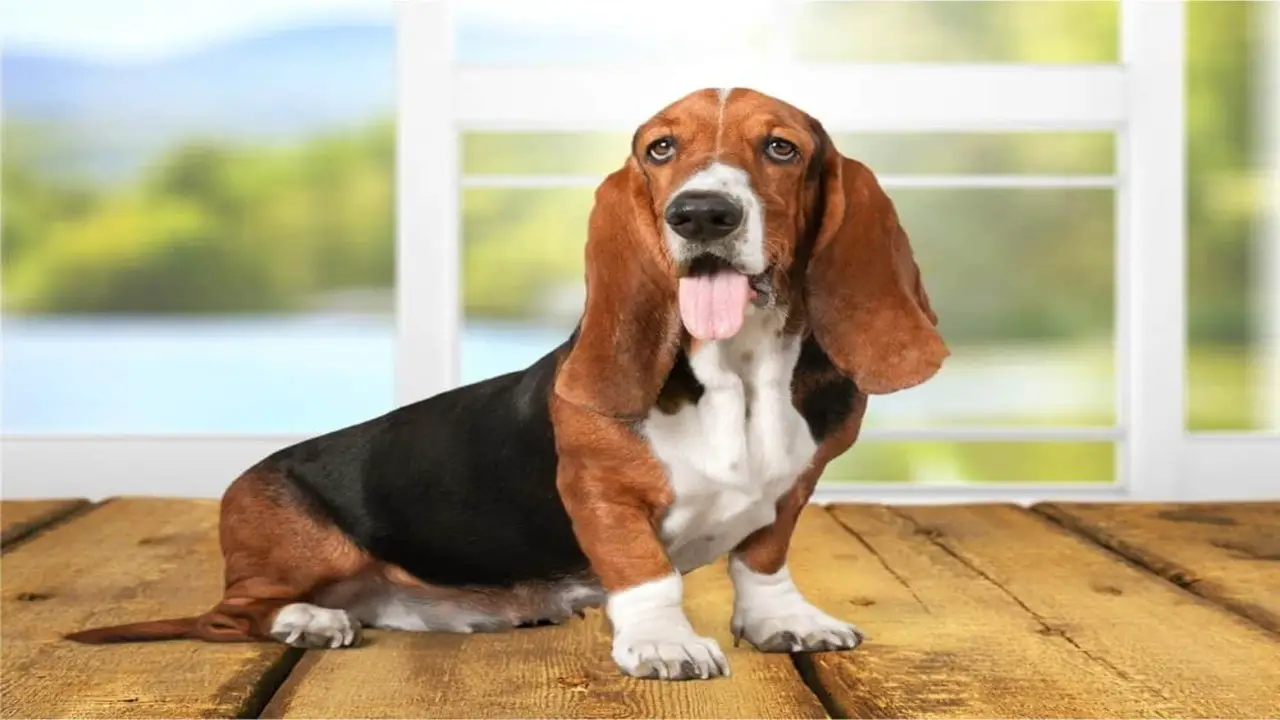
One rare colour of the Basset Hound coat is the blue Basset Hound. Blue Basset Hounds have a greyish-blue coat with darker shades around the nose, eyes, and ears. Another rare coat colour is the chocolate Basset Hound. Basset Hound enthusiasts highly covet both rare coat colours, and can be difficult to find.
It is important to note that while rare basset hound colors can be desirable, it is crucial to prioritize the health and well-being of the dog when selecting a new pet.
Blue
It’s the colour of the sky on a sunny day, the ocean on a summer vacation, and the eyes of that special someone who makes your heart flutter. Blue is simply mesmerizing, and it’s no wonder it’s one of the most popular colours in the world.
Blue is also associated with trust, loyalty, and intelligence, making it a popular choice for corporate branding and logos. So whether you’re admiring the beauty of a clear blue sky or rocking a bold blue outfit, you can’t deny the power of this captivating colour.
Lilac
This rare breed boasts a light lavender coat that is simply stunning. The Lilac Basset Hound is a showstopper and will have everyone stopping in their tracks to admire its rare and beautiful colouring.
But don’t let its delicate appearance fool you; the Lilac Basset Hound is a tough breed with a strong personality. Its unique coat colour is not the only thing that stands out about this breed. Lilac Basset Hounds are famous for their loyalty, intelligence, and determination. They make great family pets and bring joy and love to any household.
Chocolate And Tan
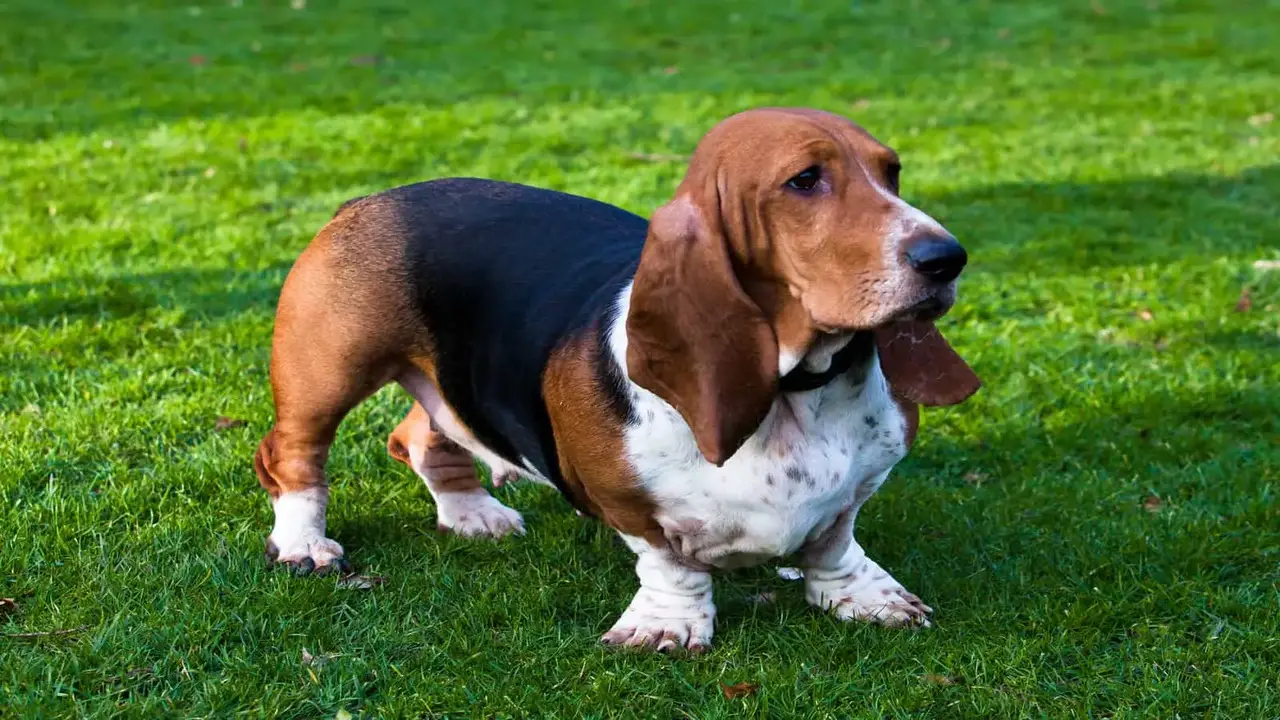
This pup’s coat is like a delicious chocolate bar with a tantalizing hint of tan. And just like a rare chocolate truffle, this colour is a bit of a rarity in the Basset Hound world.
That’s right, this colour results from a recessive gene that requires both parents to carry it. So, if you’re lucky enough to have a chocolate and tan Basset Hound, you can rest assured that your furry friend is truly one of a kind. So, if you’re looking for a sweet and rare pup, the chocolate and tan Basset Hound might be the perfect fit!
Red And White
Look no further than the red and white Basset Hound! This breed’s striking reddish-brown coat with white markings will turn heads at the dog park. But don’t let the flashy coat fool you – these pups are just as lovable and laid-back as their more common-colored counterparts. Red and white Basset Hounds will surely steal your heart with their signature floppy ears and soulful eyes.
Black And White
If you’re looking for an elegant and adorable dog, you can’t go wrong with a black and white Basset Hound. With their striking black coats and charming white markings, these pups will turn heads wherever they go.
But it’s not just their looks that make black and white Basset Hounds such great pets. These dogs are famous for their sweet and gentle personalities, making them perfect companions for families or individuals looking for a furry friend to cuddle up with.
What Are The Differences Between Rare And Common Basset Hound Coat Colours?
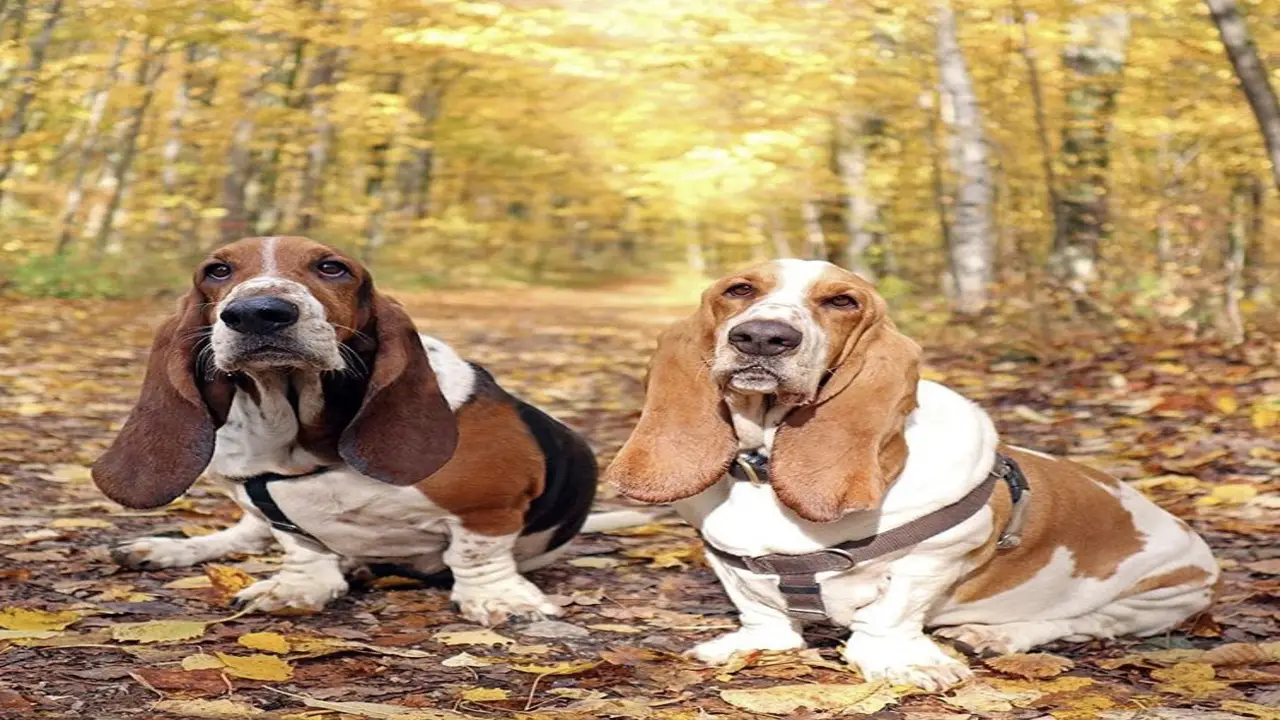
The most common Basset Hound coat colours are tricolour (black, white, and brown), red and white, and lemon and white. However, there are some unique and rare colours that you won’t see every day, such as mahogany, blue, and grey. These colours result from genetic mutations and are not as commonly seen in Basset Hounds. So, if you want to stand out from the crowd, maybe a rare-coloured Basset Hound is the right choice for you!
What To Look For When Buying A Basset Hound With A Rare Coat Colour?
While a rare coat colour can be an eye-catching addition to your furry family, ensuring the pup you bring home is healthy and happy is essential. First and foremost, make sure to do your research on reputable breeders who specialize in rare coat colours.
Ask for health clearances, check out the living conditions of the breeder’s dogs, and ensure they are transparent about any potential health issues that may come with the rare coat colour. Remember, a happy and healthy Basset Hound is always beautiful, regardless of coat colour.
How Do You Care For Basset Hounds With Rare Coat Colours?
Whether your Basset is a bold brindle or a stunning silver, it’s important to give them the right care to keep their coat looking its best. First and foremost, make sure to groom your Basset regularly. This means brushing them at least once weekly to prevent matting and remove loose fur.
For Bassets with longer hair, you may need to trim their coat to keep it from getting tangled. And don’t forget to clean their ears regularly to prevent infections – those floppy ears can trap moisture and dirt. With a little extra attention, your Basset with a rare coat colour will turn heads wherever they go.
What Is The Importance Of Proper Breeding To Maintain Rare Coat Colours?
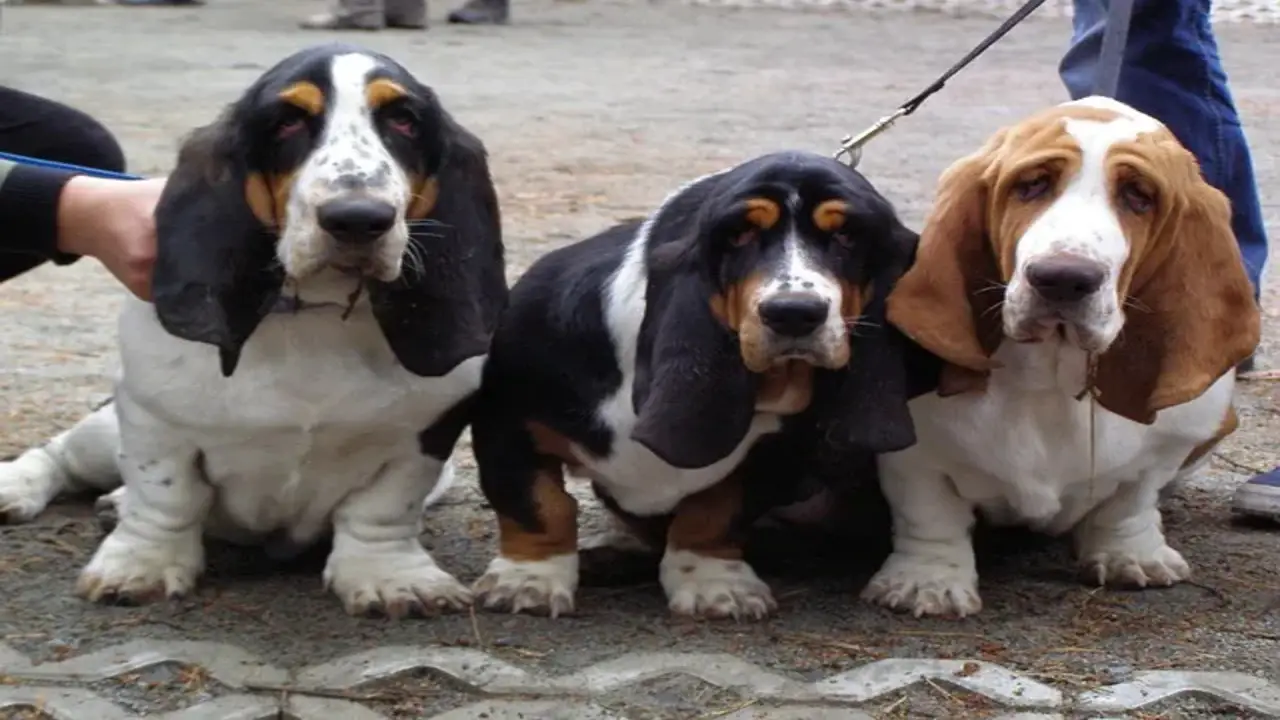
Ensuring proper breeding passes these rare genetic traits to the next generation is essential. Improper breeding can result in the dilution or loss of these rare coat colors. Inbreeding, for example, can increase the likelihood of genetic defects and reduce the gene pool, making it harder to maintain these rare colours. That’s why it’s crucial for breeders to carefully select mating pairs to ensure genetic diversity and the preservation of these unique coat colors.
Genetics: Why Your Basset Hound May Have A Different Color?
Genetics play a significant role in determining the physical characteristics of animals, including their coat colour. This is particularly evident in Basset Hounds, which have various colour variations, including tri-colour, lemon and white, and red and white.
Simply put, the genes inherited from its parents determine a dog’s coat colour. The genes responsible for coat colour in dogs are located on chromosomes, and each dog has two copies of each gene – one inherited from the mother and the other from the father. Therefore, these genes combine to determine a Basset Hound’s coat colour.
Conclusion
When considering a basset hound as a pet, it is important to consider its coat colour. The rare colours include blue, chocolate, and red, among others. While all breed standards may not recognize these colours, they can still make for a beautiful and beloved pet.
Basset hounds are famous for their distinctive droopy ears and gentle personality. The colours and patterns they come in can vary greatly. As we’ve discussed, there are several rare basset hound colors that are highly sought after by breeders and pet owners alike.
FAQ
1.Do Basset Hound Puppies Change Color?
Ans: Basset hound puppies may change colour. The coat colour of a Basset Hound puppy may darken or lighten slightly as they grow older, but they will still retain their distinctive tri-colour or bi-colour pattern.
2.Can Basset Hounds Have Blue Eyes?
Ans: Basset Hounds can have blue eyes, but it is rare. Conformation shows consider blue-eyed Basset Hounds a fault because the breed standard calls for dark brown eyes.
3.Are There Any Other Genetic Physical Traits?
Ans: There are many other genetic, physical traits, including eye color, hair color and texture, skin color, height, facial features, body shape, and susceptibility to certain diseases or conditions.
4.What Are Some Of The Rarest Colors That Can Occur In Basset Hounds?
Ans: Some of the rarest colors that can occur in basset hounds include
- Blue,
- Lilac,
- Chocolate and Tan,
- Black and White.
5.Are There Any Health Concerns Associated With Rare Basset Hound-Colors?
Ans: Dogs with this colour may be more prone to skin issues, including sensitivity to sunlight and susceptibility to parasites. Additionally, some research suggests that dogs with the Dudley colour may be more prone to eye problems, such as glaucoma and cataracts.
Meet Elyse Colburn, the devoted canine companion and storyteller behind the enchanting world of “Tales, Tails, and Adventures Unleashed.” A passionate dog enthusiast with a heart full of paw prints, Elyse Colburn shares heartwarming tales and insightful adventures, celebrating the joy, loyalty, and endless antics that make every dog a true hero. Join Elyse Colburn on this tail-wagging journey, where every post is a love letter to our four-legged friends.


